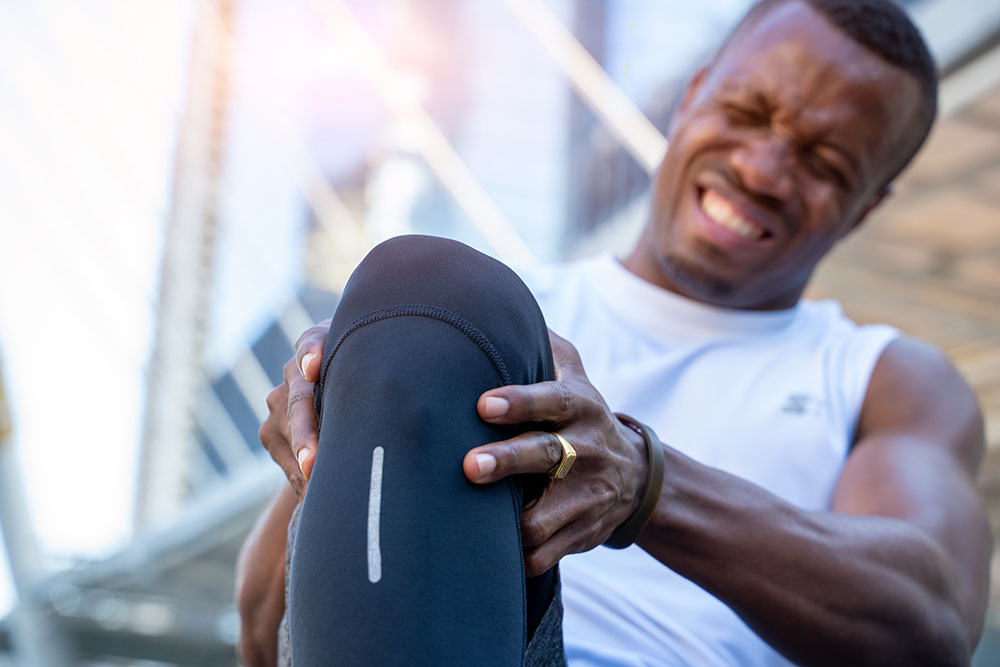
Dr. Richard Cunningham of Vail-Summit Orthopaedics & Neurosurgery (VSON) specializes in treating ACL injuries and getting patients back to doing what they love to do. One question he often hears is, “Can I run after ACL surgery?”
Returning to physical activity too soon after ACL reconstruction can jeopardize the recovery and increase the risk of re-injury. As one of the top ACL surgeons in Colorado, Dr. Cunningham takes a closer look at why timing matters—especially when it comes to running after ACL surgery.
Understanding ACL Recovery
The ACL, or anterior cruciate ligament, plays a vital role in knee stability, particularly during high-impact activities like cutting, pivoting, and, yes, running. After ACL surgery, the new graft needs time to incorporate and mature within the body. Dr. Cunningham explains, “Although you may feel good a few months into recovery, the graft is still biologically weak and vulnerable to stress.”
So, can I run after ACL surgery? Yes—but only when your body is truly ready.
Why Running Too Soon Is Dangerous
While patients are often eager to resume jogging or sports, running after ACL surgery too early can put excessive strain on the healing graft. Dr. Cunningham warns, “Resuming high-impact activity prematurely increases the risk of inflammation, swelling, pain, and possibly graft failure.”
Some patients mistakenly believe that they can speed up the healing process with extra workouts. In our active population, Dr. Cunningham finds that patients are more likely to overd it than underdo it. Running too soon after ACL surgery before reaching the necessary strength benchmarks can result in stretching or possibly re-tearing the ACL graft.
Key Milestones Before Running
Before asking yourself, “Can I run after ACL surgery?” consider these rehab milestones that should be met before starting a return-to-running program:
- Adequate Quadriceps Strength: At least 70% strength compared to the non-injured leg.
- No Pain and Minimal Swelling: The knee should be pain-free with only mild inflammation after activity.
- Proper Neuromuscular Control: Ability to balance, hop, and decelerate with proper biomechanics and control.
- Clearance from Your Surgeon and Physical Therapist: Dr. Cunningham emphasizes, “Your care team will guide you through functional testing to determine if your knee is ready.”
Safe Return-to-Run Progression
Once you’re cleared, a gradual return-to-run program is permitted. At approximately 4 months from ACL surgery, patients are usually able to start with short walk-jog intervals on a predictable surface such as a high school track, then slowly build intensity and distance over time. Initially, one should avoid uneven surfaces and steep inclines.
“Patience pays off,” Dr. Cunningham says. “Patients should be able to return to running, but we want them to be able to do it safely and confidently for years to come.”
Trust the Process—And Your Team
While it’s natural to be eager to resume your favorite activities, running after ACL surgery requires restraint and expert guidance. Dr. Cunningham and his team at VSON understand the physical and emotional journey that comes with ACL rehab. Their goal is to help patients return to sport stronger, more stable, and less prone to future injury.
So, can I run after ACL surgery? Yes, but only when your body and your care team say you’re ready.
Top ACL Doctor in Colorado – Richard Cunningham, MD
Whether you’re recovering from surgery or just exploring your treatment options, Dr. Cunningham brings expert advice to every patient’s care plan. If you’re wondering about running after ACL surgery and how to get back to your sport safely, schedule a consultation with Dr. Cunningham at VSON today.
Let’s make sure you return to the mountain, trail, or track stronger than ever.
